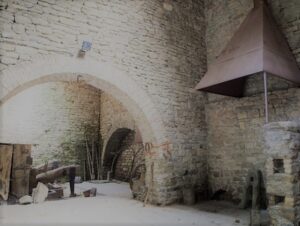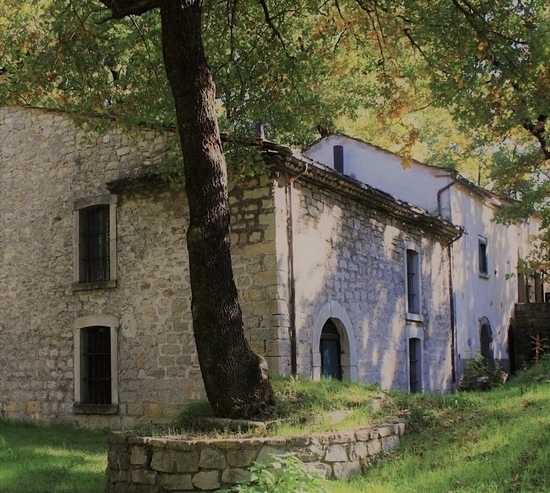In the first stretch of the Verrino river, near the village of Agnone, in the Upper Molise, the water forms suggestive waterfalls that, in the past centuries, have fed an ancient copper foundry, a hydroelectric power station and numerous mills.
The Verrino torrent originates in the municipality of Capracotta and after passing through numerous villages it flows into the Trigno river. At the height of Agnone, the water course creates numerous waterfalls, as suggestive as very useful for the supply of water energy. These conditions in the past have allowed the birth of many productive activities linked to the river strength and still existing today, even if no longer active.

A map dated 1754 attests the presence of a copper foundry (ramera) in Agnone, in the San Quirico district, along the course of the Verrino. The structure, owned by the Convent of San Francesco, had melting furnaces powered by water energy, capable of reaching a temperature of 1100 degrees. The incandescent metal was then collected with special ladles and it formed still hot copper loaves. Heavy hammers, set in motion by the pressure of the river waters, finally forged the loaves turning them into vases.
The factory made it possible to quickly supply the numerous workshops of coppersmiths in the city, where metal objects were finished and sold. Furthermore, according to the sources, it was one of the very first industries in the area to have had organized shifts, canteens and dormitories for workers.
Two centuries later, in 1905, a hydroelectric power plant was inaugurated along the river to supply the houses, so much so that the electrification of the city of Agnone was guaranteed eight years earlier than in Rome. Obviously, the same hydroelectric current also powered the ramera until 1970, the year of its closure. The power plant, now also inactive, offers a convenient access point to the banks of the Verrino.
The Mulino Scatozza and the Mulino Casciano are still visible; they are ancient private structures used for grinding wheat thanks to the mechanism of the horizontal water wheel, typical of mountainous areas. The structure of the second mill develops on three levels: one underground with the so-called water chamber and the remaining two equipped with millstones, space for the storage of flour and rooms for the miller’s residence.
These testimonies of industrial archeology are still easily visible and can be visited from the outside, immersed in a suggestive and uncontaminated naturalistic context, between the green of the woods and the blue of the waterfalls.
Silvia Di Menna

